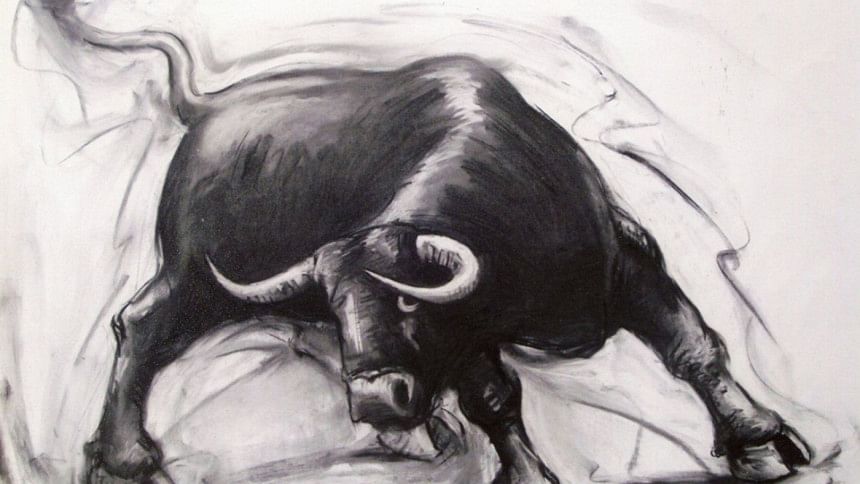Maksud's Mumbai Adventures

In his recently-concluded weeklong exhibition at Mumbai's busy Jehangir Art Gallery, Maksudul Ahsan showcased about 46 paintings -- mostly in acrylic and oil. Some of the large scale paintings hark back to the Partition of 1947 and its aftermath. “In my view, the undivided subcontinent was truly secular. The Partition of 1947 led to a lot of displacement, sufferings and communalism,” says the artist.
At the exhibition were portraits of prominent leaders of the subcontinent. Maksud is also concerned with the struggles of refugees and the oppression of women. The serious problem of child marriage is the theme of “Ballo Bibaho”. Sometimes women are shown at work and rest, while workers toil in the tea gardens.

There were some prints and serigraphs also. These included some drawings centred around “Khepa”. The bull symbolises a global figure or political aggression, says the artist. This belongs to series called “Black”. The bulls are not mere drawings; they are theme-based works which the artist began in the 1980s. It reflects the conflict of humans where the strong attack the weak.
He says bullfighting is a popular tradition in Spain but he sees no logic behind this cruel sport. People, who are eager spectators of a sport where a man is pitted against a poor beast, seem cruel to the artist. Picasso saw the game as a tradition but he sees the game in a negative light. “The animal is innocent and to egg it on is cruel,” according to the artist.
Some of his prints are based on his own poetry. These epilogues treat feelings like human love or passion for Nature. They are sketches which are transferred into serigraph of which there were 15. The rest were oils and acrylics.
Maksud has been working on the subject of women for a fairly long time. The women are like the soil of a country, he says, drawing parallels with Mother Nature that nurtures a child and plants. A woman has contributed greatly to society but she is often helpless when she is forced into cruel customs like marriage. Such cruelty is depicted in Maksud's paintings.

 For all latest news, follow The Daily Star's Google News channel.
For all latest news, follow The Daily Star's Google News channel. 



Comments